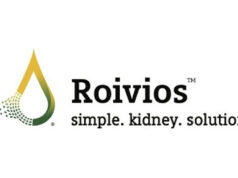
Huge strides have been made in preventing contrast-associated acute kidney injury among patients undergoing percutaneous coronary intervention (PCI) and other interventional procedures in recent decades, Roxana Mehran (Icahn School of Medicine at Mount Sinai, New York, USA) tells Cardiovascular News, but many patients still remain at high risk of suffering kidney damage when they undergo a procedure in the cath lab. In this interview, Mehran explains the rationale behind the Mehran-2 CA-AKI Risk Score an updated tool to help interventional cardiologists assess the burden of risk their patients face before undergoing a procedure.
How big of a problem is contrast induced injury?
In the USA alone 280 million radiological procedures utilising contrast media are being performed every year. A lot of good work has been done in the last two decades in improving our risk assessment, minimising the volume of contrast media in highest risk patients and also hydrating our patients before, during and after our procedures.
But, acute kidney injury is still one of the most frequent complications of interventional procedures that require contrast media and has been previously associated with a significant increase in mortality, prolonged hospital stays and costs. So, the stage is set that we absolutely should be focusing on risk assessment, it is one of the most important things we could do to prevent this complication—to evaluate who is at risk and make sure that we are very careful with those patients.
What was the rationale for developing a new risk score to assess acute kidney injury?
Two decades ago we developed the Mehran risk score, it was externally validated by multiple settings, and I am so thrilled to see that many people now use this. I knew that it was time to refocus and look at this, because in the last two decades there have been remarkable advances in recognition and implementation of preventive measures, enhancing definitions for AKI, and improvement of the overall incidence.
In the original Mehran Risk Score, if you had a high score, you had a 57% chance of incurring acute kidney injury. These estimations needed to be recalibrated, especially given that the rates had decreased over the last years.
During these last years, the Acute Kidney Injury Network (AKIN) have also changed the definition acute kidney injury with a staging definition that is quite useful. Therefore, it was absulotly important to evaluate the indicence of AKI using these new defnitions. This is why it was important for us to do this work.
It took us two years to get this together, I have been thinking about this recalibration and making sure that we had a good cohort, both a derivation and a validation cohort, and then externally evaluating this through very important unbiased and independent statistical analytical work.
Were there any important differences in the data between the original research and your latest iteration?
First of all, the best news is that the rate of acute kidney injury, using the AKIN definition, is below its previous rate—about 4% on average for all comers—that is pretty good. This is despite the fact that procedural complexities have gone up, that we see more older patients with more risk factors and acute presentations.
With this new analysis, we have two models—one with just preprocedural variables and another that also gives us procedural variables. This enables the users to have some risk assessment before the procedure, and then with procedural factors contributing, clinicians can be more vigilant in following patients who have complex anatomy, or experience a bleed or no reflow, for example.
What are the fundamentals when dealing with patients who are at high risk for acute kidney injury?
It depends on what those high risks are. For someone who comes into the cath lab having an acute myocardial infarction (MI) or needing an urgent procedure you must proceed as usual and without delay.
But, in cases meeting the criteria for a risk of acute kidney injury, you may need to be more vigilant, keeping the patient in hospital if needed for IV hydration, and following kidney function with evaluation of creatinine and estimated glomerular filtration rate (e-GFR). Any time you have an older patient who is anaemic, diabetic, and also has history of kidney disease—be vigilant—these are high risk parameters for AKI. Be cognisant of the kind of work you are doing in the cath lab and when you are performing procedures, think about the whole patient, not just what you see in front of you on the screen.
What is your message for colleagues who have used the previous generation of the risk score, or have not used it at all?
We have tried really hard to come up with a very simple score. But, use your common sense, if you are not going to use the score! At least look at this paper, read and understand it and know that our risk score is there to make your assessment very simple.
Think about the patient as a whole and all of the complications that could have a negative impact, even if you get a perfect result in the lab—you do not want to have a beautiful, perfect result and then have the patient die because you caused damage to their kidneys. There has been incredible progress in reducing incidence of AKI after PCI. In the past the rates of acute kidney injury were 15‒20%. We are down to single digits now, so it is pretty good, but the score still matters, as AKI is independently associated with mortality.










